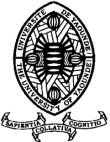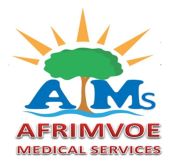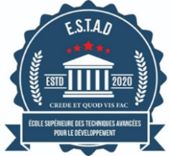Clinical, Paraclinical, Therapeutic and Evolutionary Aspects of Gout in Brazzaville
Aspects Cliniques, Paracliniques, Thérapeutiques et Evolutifs de la Goutte à Brazzaville
DOI:
https://doi.org/10.5281/hra.v2i5.5626Keywords:
Gout, epidemiology, clinical, CongoAbstract
RESUME
Introduction. Au Congo, les études portant sur la goutte sont caractérisées par leur caractère parcellaire avec des effectifs plutôt faibles et peu représentatifs. Le but de notre étude était de décrire les aspects cliniques, paracliniques, thérapeutiques et évolutifs de la goutte vue en hospitalisation en Rhumatologie au Centre Hospitalier Universitaire de Brazzaville. Méthodologie. Il s’agissait d’une étude descriptive, transversale, rétrospective conduite sur une période de 5 ans allant du 1er janvier 2012 au 31 janvier 2017 et portant sur les dossiers des patients hospitalisés pour une goutte dans le service de Rhumatologie du CHU de Brazzaville, Congo. Résultats. Nous avons enregistrés 75 patients souffrant de goutte soit une prévalence de 71,43% avec un âge moyen de 60 ans et un sex ratio de 4. L’atteinte articulaire était polyarticulaire chez 52% des cas, suivie d’oligoarticulaire et monaoarticualaire dans 24% des cas. L’uricémie était élevée chez 67,62% des patients avec une moyenne de 80 mg/l. La radiographie standard était anormale chez 34,21% des patients, montrant un pincement de l’interligne articulaire (29,40%) suivie du pincement de l’interligne articulaire plus géodes et du pincement de l’interligne articulaire plus image en Hallebarde dans (23,55%), de géodes et /ou érosions intra osseuses (17,60%) et de d’érosions para articulaires excentrées plus tophus intra osseux (5,90%). la prise en charge médicamenteuse était dominée par l’association Colchicine –Allopurinol, avec une mauvaise observance thérapeutique dans 95% des cas chez les patients goutteux avec comorbidités. Conclusion. La goutte reste peu fréquente en hospitalisation et touche préférentiellement les adultes d’âge mur, avec une nette prédominance masculine.
ABSTRACT
Introduction. In our country, studies on gout are characterized by their fragmented nature with rather small and unrepresentative sample sizes. The aim of our study was to describe the clinical, paraclinical, therapeutic, and evolutionary aspects of gout seen in hospitalized patients in the Rheumatology department at the University Hospital of Brazzaville. Methodology. This was a descriptive, cross-sectional, retrospective study conducted over a period of 5 years from January 1, 2012 to January 31, 2017, focusing on the medical records of patients hospitalized for gout in the Rheumatology department of the University Hospital of Brazzaville, Congo. Results. We recorded 75 patients suffering from gout, representing a prevalence of 71.43% with an average age of 60 years and a sex ratio of 4. Joint involvement was polyarticular in 52% of cases, followed by oligoarticular and monoarticular in 24% of cases. Uric acid levels were elevated in 67.62% of patients with an average of 80mg/l. Standard radiography was abnormal in 34.21% of patients, showing joint space narrowing (29.40%), followed by joint space narrowing with geodes and joint space narrowing with "halberd" image (23.55%), geodes and/or intraosseous erosions (17.60%), and eccentric para-articular erosions with intraosseous tophus (5.90%). Drug management was dominated by the Colchicine-Allopurinol combination, with poor therapeutic adherence in 95% of gout patients with comorbidities. Conclusion. Gout remains relatively rare in hospitalization and predominantly affects middle-aged adults, with a clear male predominance.
References
- Collège français des rhumatologues. Rhumatologie 2015; 2ème Ed. Paris: Elsevier Masson : 415p.
- Lioté F. Epidémiologie de la goutte. Réflexions Rhumatologiques 2010; 132(4):11-14.
- Jeandel P, Roux H. Epidémiologie des affections rhumatologiques en Afrique subsariènne. Rev Rhum 2002; 69: 764-76.
- Richette P, Bardin T. Epidémiologie of gout. Lettre du rhumatologue 2012; 134 : 6-9.
- Kodio B, Pamanta IS, Sylla C, Kayentao K, Dolo H, Cisse IA. Step wise approach of gout in the rheumatology ward of point G, university teaching hospital of Bamako, Mali. Afr J Rheumatol 2015; 3(1): 22-6.
- Neogi T, Jansen TL, Dalbeth N, Fransen J, Schumacher HR, Berendsen D. Gout classification criteria: an American college of rheumatology/European league against rheumatism collaborative initiative. Arthritis Rheumatol 2015; 67(10): 2557-68.
- Saag KG, Mikuls TR, Abbott J. The epidemiology of gout and calcium pyrophosphate dehydrates deposition disease. In: Wortmann RL, et al, editors. Crystal-induced arthropathies. New York: Taylor et Francis 2006; P. 7-35.
- Richette P, Bardin T. The epidemiology and genetic of gout. Presse Med 2011; 40(9) : 830-5.
- Mijiyawa M, Oniankitan O. Facteurs de risqué de la goutte chez des patients Togolais.Rev Rhum 2000; 67(8): 621-6.
- Kemta Lekpa F, Doualla MS, Kamdem F et al. La goutte en consultation de Rhumatologie au Cameroun. Rev Rhum 2016;83 (1) : 263.
- Pascart T, Biver E, Wibaux C et al. Etude des hospitalisations pour goutte dans un service de rhumatologie entre 2000 et 2010-Analyse rétrospective de 114 observations. Revu Rhum 2014; 81 :35-40.
- Amri D, Alaya Z, Zaghouani H et al. Quelles comordités au cours de la goutte : à propos de 52 cas. Revu Rhum 2016; 83(1) : 253-54.
- Mijiyawa M, Bouglouga OE. Hyperuricémie et goutte en zone intertropicale. Revu Rhum 2003;70 : 152-56.
- Hayward RA, Rathod T, Roddy E et al. The association of gout with socioeconomic status in primary care: a cross-sectional observational study. Rheumatology 2013; 52: 2004-8.
- Singwé-Ngandeu M, Nouédoui C, Sobngwi E et al. La goutte en consultation hospitalière de rhumatologie à l’hôpital central de Yaoundé. Mali Médical 2009;24(4) :17-20.
- Kimbally Kaky G, Voumbo Y, Gombet Tet al.Etude de la prévalence de la consommation d’alcool et de tabac à Brazzaville.Cardiologie Tropicale 2011;33(129) :1-4.
- Zhang W, Doherty M, Bartin T, et al. EULAR evidence based recommendations for gout. Part II: Management. Report of a task force of the EULAR Standing Committec for international Clinical Studies Including Therapeutics (ESCSIT). Ann Rheum Dis 2006; 65(10):1312-24.
- Buttar HS, Li T, Ravi N et al. Prevention of cardiovscular Diseases: Role of exercise, dietary interventions, obesity and smoking cessation Exp Clin Cardiol 2005 ; 10 (10): 229-49.
- Maki KC. Dietary factors in the prevention of diabetes mellitus and coronary artery disease associated with the metabolic syndrome. Am J Cardiol 2004; 93(11): 12-7.
- Chalès G, Richette P. Obésité, hyper uricémie et goutte. Rev Rhum 2016; 83(1) : 44-9.
- Jguirim M, Mhenni A, Klii R et al. Commodités au cours de la goutte. Rev Med Interne 2015;36 (1) : 162-3.
- Roddy E, Chi HK. Epidemiology of gout. Rheum Dis Clin North Am 2014; 40(2):155-75.
- Aune D, Norat T, Vatten LJ. Body mass index and the risk of gout : a systematic review and dose-response metaanalysis of prosective studies. Eur J Nutr 2014; 53(8):1591-601.
- Lee J, Lee JY, Lee JH et al. Visceral fat obesity is highly associated with primary gout in a metabolically obese but normal weighted population: a case control study. Arthritis Ress Ther 2015; 17:1-7.
- Takongmo Singwé-Ngandeu M, Gonsu Kamga H et al. Complications tophiques de la goutte au CHU de Yaoundé: analyse d’une série de 24 cas. Health Sci Dis 2009; 10(4) :1-5.
- Chalès G. De l’hyper uricémie à la goutte: épidémiologie de la goutte. Rev Rhum 2011;78(3): 109-15.
- Dessein P, Shipton E, Stanwix A et al. Beneficial effects of weight loss associated with moderate calorie/ carbohydrate restriction, and increased proportional intake of protein and unsaturated fat on serum urate and lipoprotein levels in gout a pilot study. Ann Rheum Dis 2000; 59(7):539-43.
- Borges RL, Ribeiro AB, Zanella MT.Uric acid as a factor in the metabolic syndrome. Curr Hypertens Rep 2010; 12(2): 113-9.
- Ford ES. The metabolic syndrome and C-reactive protein, fibrinogen and leukocyte count: findings from the third National Health and Nutrition Examination Survey. Atherosclerosis 2003; 168(2): 351-8.
- Hadjeres S, Soudan P. L’hyper uricémie dans l’hypertension artérielle et l’insuffisance rénale: facteur causal ou épiphénomène? Rev Med Suisse 2009;5 :451-6.
- Harrison M. Erythrocyte sedimentation rate and Creactive protein. Aust Preser 2015; 38(3):93-4.
- Chen LY, Zhu W H, Zhou-wen Chen et al. Relation ship bertween Hyperuricemia and metabolic syndrome. J Zhejiang Univ Sci B 2007 ; 8(8): 593-8.
- Peng TC, Wang CC, Kao TW et al. Relationship between Hyperuricemia and lipid profiles in US Adults. Biomed Res Int 2015; 2015:1-7.
- Bileckot R, Ntsiba H, Mbongo JA et al. Aspects épidémiologiques et cliniques de la goutte en Afrique équatoriale. A propos de 60 cas suivis dans le service de rhumatologie du Centre Hospitalier Universitaire de Brazzaville. Rev Rhum1991; 58 :863-7.
- Riedel AA, Nelson M, Wallace K et al. Prevalence of comorbid conditions and prescription medication use among patients with gout and hyperuricemia in a managed care setting Clin Rheumatol 2004;10(6): 308-14.
- WEI L,Mackenzie IS, Chen Yet al. Impact of allopurinol use on urate concentration and cardiovascular outcome. Br J Clin Pharmacol 2011; 7(4): 600-7.
- George J,Carr E, Davies J et al. High-dose allopurinol improves endothelial function by profoundly reducing vascular oxidative stress and not by lowering uric acid. Circulation 2006; 114 (23):2508-16.
- Noman A, Ang DS, Ogston S et al. Effect of high- dose allopurinol on exercise in patients with chronic stable angina a randomised placebo controlled crossover trial.Lanct 2010; 375 (9732):2161-7.
- Krishnamurthy Alazao DM, Stefanov DG et al. The Effect of Allopurinol on renal function. JClin Rheumatol .(2017;23 (1):1-5.
Downloads
Published
How to Cite
Issue
Section
License
Authors who publish with this journal agree to the following terms:
- Authors retain copyright and grant the journal right of first publication with the work simultaneously licensed under a Creative Commons Attribution License CC BY-NC-ND 4.0 that allows others to share the work with an acknowledgement of the work's authorship and initial publication in this journal.
- Authors are able to enter into separate, additional contractual arrangements for the non-exclusive distribution of the journal's published version of the work (e.g., post it to an institutional repository or publish it in a book), with an acknowledgement of its initial publication in this journal.
- Authors are permitted and encouraged to post their work online (e.g., in institutional repositories or on their website) prior to and during the submission process, as it can lead to productive exchanges, as well as earlier and greater citation of published work










